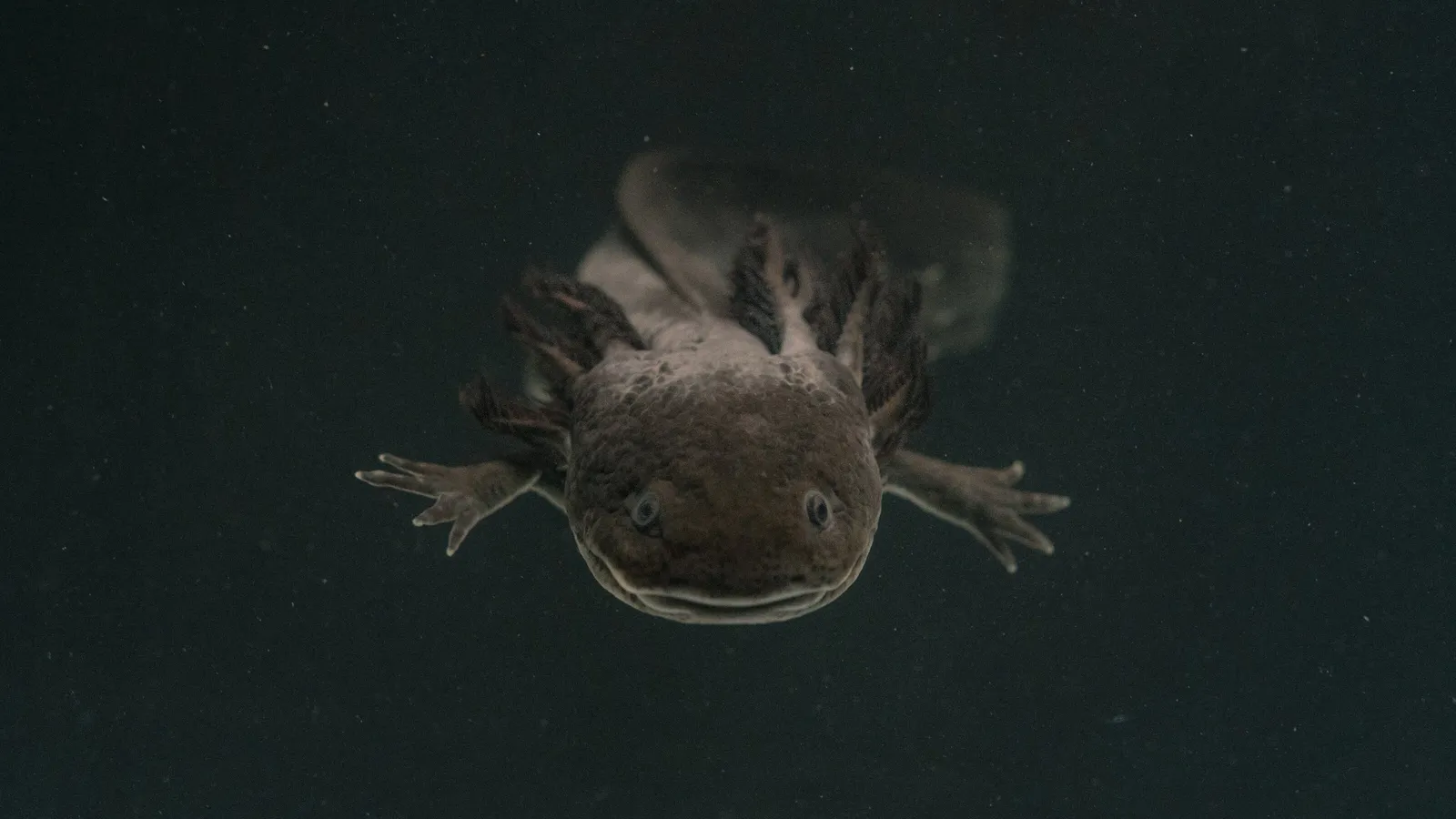
Mexico, Feb. 28 - Axolotls are magical creatures, closely related to Mexico, its culture and history. Their characteristics are unique and surprising and reflect Mexican resilience, says Luis Antonio Rojas, a documentary photographer and National Geographic Explorer who captures these creatures in images.
But it is not only their biological peculiarities that symbolize the country. There is a pre-Hispanic legend that links axolotls with Xólotl, the god of fire and lightning, thus being associated with the very origins of the universe.
Through content produced by National Geographic Creative Works to celebrate Axolotl Month, Cerveza Victoria invites you to learn more about this species with Mucho México.

What are axolotls?
Axolotls are amphibians belonging to the genus Ambystoma, which includes 33 species distributed from the Mexican Plateau to southwestern Alaska and southern Canada, explains a document published in 2018 by the Secretariat of Environment and Natural Resources (Semarnat) of Mexico.
In Mexico, 17 species can be found, distributed in the northeast and center of the country. Of all of them, 16 are endemic to Mexico, that is, they are only found in that part of the planet, the document completes.

They stay “young” forever and other curious characteristics of the axolotl
What makes axolotls special? Luis Antonio Rojas, National Geographic Explorer, first mentions that they never go beyond their larval phase, a phenomenon known as neoteny. In other words, they never complete metamorphosis. “In a certain way, they always stay young,” he says.
For this reason, they remain in water for their entire adult life and even reproduce there, unlike other salamanders. Also, the Explorer continues, they are able to be in and out of water, since they can breathe through their skin, mouth and gills.
Within their habitat, axolotls camouflage themselves, which allows them to protect themselves from predators. This is possible thanks to their skin, whose color varies between brown, black, green, mottled colors, gold and sometimes pink, since there are albino individuals (as they are easier to identify in nature, their images are the ones that predominate on the internet and in aquariums, but not in the wild).
Physically, they also stand out for having only four toes on their hind legs and five on their back legs, without nails. In addition, their body is robust, they lack eyelids and have lungs and gills. “They have a large mouth and tiny teeth that are arranged in rows at the entrance to the oral cavity with a retractable tongue, like that of frogs,” the 2018 document completes.

The axolotl can regenerate parts of its body without leaving scars
Another extraordinary fact about this species that the documentary photographer highlights is that its genome is complex (it is the second longest in the animal kingdom and about 10 times longer than the human genome, details an article in National Geographic) and has regenerative properties. So much so, that occasionally newborns nibble on the limbs of their siblings, without prejudice to their legs growing back.
Curiously, they can also regenerate their spine, their heart and up to 40% of their brain, details Rojas, who photographs these salamanders. All of this without leaving scars. For the Explorer, this quality symbolizes the resistance of Mexico.
This characteristic has captured the attention of science, especially medicine, which studies the amphibian with the interest of promoting tissue regeneration in humans.
The pre-Hispanic legend of the axolotl
Javier del Valle is a great connoisseur of Nahuatl culture and, in conversation with National Geographic, he narrates in detail the amazing legend of the axolotl, which is one of the most important links of the animal with Mexico.
It is said that during the Fifth Sun (the era in which we live, according to the Aztecs) the gods met to create the universe and generate life. Part of this creation involved the sacrifice of the gods in order to create day and night. Xólotl, the twin brother of the god Quetzalcoatl, was supposed to throw himself into the bonfire. But, he regretted the offering and fled.
As he was pursued by the other gods, the story of the chinampero continues, Xólotl camouflaged himself as a corn plant, but was discovered; then, he became a maguey (a succulent plant from which various products such as pulque are obtained). Once again discovered, he decided to throw himself into the water, where he became an axolotl.
The name of the animal comes from this legend, which comes from the Nahuatl word “axolotl.” Atl means “water” and Xólotl means “monster,” meaning “water monster” or “water dog,” explains Javier del Valle.


Left:
Researchers have dedicated themselves to preserving, caring for and studying this small Mexican water monster.
Right:
Preserving the Mexican axolotl is key for the ecosystem, its vulnerability is enormous, and this little one becomes a thermometer when it comes to measuring the health of its territory.
In short, the axolotl represents a lot of Mexico. As Luis Antonio and Javier describe, its biological characteristics and the stories that surround it make it a Mexican reference. “It is a very important animal for the ecosystem,” del Valle emphasizes.
“Its ability to adapt, fight and regenerate has become a symbol of resistance,” insists the Explorer, who also invites us to celebrate the Month of the Axolotl by learning more about it and supporting protection actions.
“I think it is a great symbol of our country because of how closely it is tied to our history, to our grandparents. Thinking about it and protecting it is a way of defending our precolonial identity,” he concludes. (Text and Photos: National Geographic)